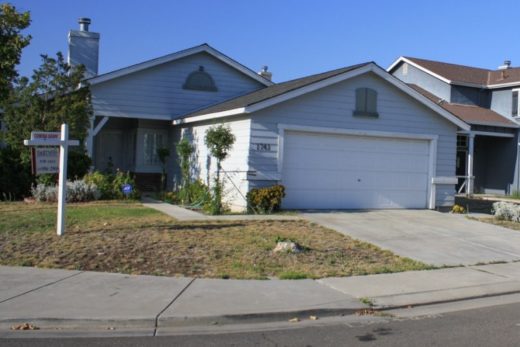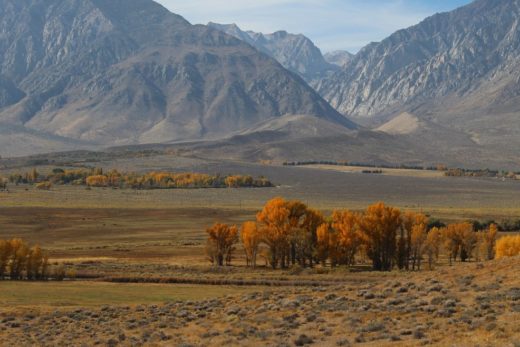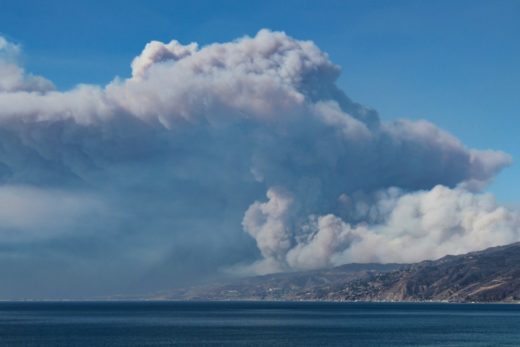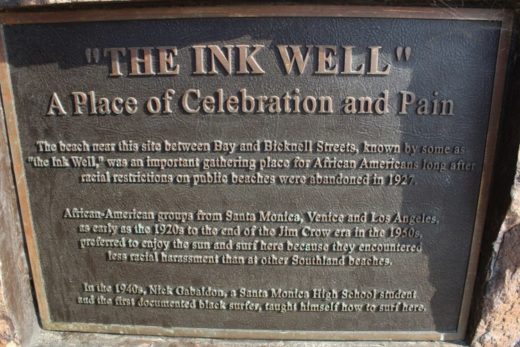While strolling along a California beach, stream, or riverbed, or plodding over a sand dune, you may not realize that there is a captivating world of natural history at your feet. But, there it is in the sand, calling out to you, waiting to reveal its story. Join us as we plunge into evolving natural landscapes with a California grain of sand. And note how this documentary is dynamically connected to our previous story that followed a California water drop.
Forward: Sand Grain Abbreviated Autobiography
Let me introduce myself. I am a grain of sand. You have seen me resting or moving along the ground, probably around your feet. You may have even trapped me in your shoes or dragged me into your home. Though you may not have paid attention, my sparkling crystals were shouting out to share my enthralling stories of adventure and intrigue that span millions of years of natural history in the Golden State.
There are much older and younger rocks, pebbles, and sand grains, but my story began about 100 million years ago. It started deep below the surface in a massive melt that you call a magma chamber. This scalding, churning mass formed as a dense, relatively thin ocean plate slid east and was subducted beneath a less-dense, more buoyant continental plate that rode on top of it. I was dragged with other materials of the ocean crust that were later mixed, incorporated into, and melted with the continental crust in very high temperature environments. As the dynamics changed and the subduction zone migrated away, I cooled and crystallized with millions of tons of other materials around me. In my case, I grew into a large, tough quartz crystal, though I was surrounded by some darker crystals with different chemistries. I remained in this still-warm-but-gradually-cooling environment, deep below the surface, resting for millions of years.

Nearly 80 million years later (more than 20 million years ago), tectonic activity lifted me along with the surrounding granitic rock materials. Overlying rock formations were eroded away, exposing us at the surface in a very different California. Weathering broke us into smaller fragments so that erosion, energized by running water, carried us away, toward the ancient coastline that was a little farther east compared to today’s seashore. There, we were deposited, buried below layers of fresh sediment, and glued and pressed into sedimentary rock layers, where we rested for nearly 20 million more years. Just a few million years ago, we were lifted again by tectonic activity.

In what seemed to be a repeat performance, overlying layers of rock were eroded away until we were exposed at the surface again, this time within our beds of sandstone, only to be subject to a fresh round of weathering. I eventually broke out as a chunk of sandstone, was whittled down to a sand grain, and got carried into a stream, until I was deposited on the beach. There, I got caught in the wave zone and pushed down the beach where I was discovered for this story.

Looking to the future, I will eventually be carried back into the surf and deposited into a deep submarine canyon. As tons of new sediments are deposited on top of me, I will be pressed and incorporated into sandstone again. I will wait there for millions more years for the future internal forces or heat sources that might transform me yet again, as I journey through the eternal rock cycle. Remember that there are billions of other California sand grains that may share similar or quite different stories about where they came from and where they are going; they all contribute to the Golden State’s incredibly diverse landscapes and natural history.
Though I’ve just summarized my adventures, there is much more to learn from my experiences. They are as much about me as they are about you, since we are all being impacted by the powerful and dynamic Earth cycles and systems that can destroy or nurture us. So, I challenge you to read on through the following sagas, recounting some details of my escapades from a more scientific point of view. They include long periods of sedentary calm, punctuated by violent upheavals and turbulent migrations, through millions of years of Earth history in California.
Preface: Following a Grain of Sand
This is a story about the physical systems and cycles which have shaped and continue to sculpt the Earth around us and the sand grain that we follow. They include long periods of intense internal heat and pressure, followed by undisturbed tranquility and isolation, succeeded by steady upheavals of unsettling tectonic activity, fueled by Earth’s internal engines and heat sources. These enduring environments are interrupted by relatively brief intervals of alterations and radical transformations that involve exposure to harsh environments and exciting, turbulent, action-packed scenes, driven by Earth’s powerful external forces.
Because they have been located on or near plate boundaries, California’s landscapes have long displayed some of the best examples of how tectonic forces can, relatively rapidly, lift terrains high above their base levels. These steep, freshly exposed slopes quickly become playgrounds for energized external, denudational processes that collaborate to degrade landscapes back down, often to the sea. These highly energized, often counterbalancing forces dominate the destiny of our California sand grain.
Your latest trip to the coast could never rival the more than 100-million-year-long odyssey that finally delivered our sand grain to the same beach that you now share. We dare to recognize here the significance of the time-honored method of time keeping known as the sand clock or hour glass, as it compares to geologic time. Could it be more than a coincidental metaphor? Could the sand grains sifting through our hour glass, counting seconds, minutes, and hours, simply be impersonating the sand grains circulating in Earth’s cycles as they count time by the decades, centuries, and millions of years?

Armed with our knowledge about Earth history, we might rethink our uninformed perceptions of a grain of sand. We cast aside our previous dismissals, such as “dirt cheap” or “all we are is dust in the wind”, elevating sand to the respect it has earned in our world with “old as dirt” and “solid as a rock”. Because, as you will see, our sand grain is far more than solid as a rock, as it represents an artifact of fascinating natural history, evidence of millions of years of Earth systems and cycles that continue to this day and will continue long after we have perished. You don’t have to look far: as we follow our curiosity, more pieces of this sand puzzle fall into place. They fit together to paint this incredibly diverse and colorful picture we call California. Following our grain of sand opens new windows, clears our lenses, and clarifies our place in this world and how we might fit in. Science guides us to learn more from this sand grain’s magical mystery tour that beckons us.
We have divided our story into five parts and individual pages that follow our sand grain: Part I: From the Cauldron below into the Light Above; Part II: Roundabout Trip to the Beach; Part III: On the Beach and into the Ocean; Part IV: Sand Grain Natural History Glossary of Explanations and Definitions; and Part V: Sand Grain Journeys California Picture Book. Simply click on to that page if you wish to skip to another part.
Part I: From the Cauldron below into the Light Above
We begin more than 100 million years ago, during the Cretaceous Period of the Mesozoic Era. Though much of California was still below the ocean, mountain building was well underway and steep ancient ranges were emerging above the sea. This helps explain why there are few dinosaur fossils in the Golden State compared to some other western states just toward the east, where there were more expansive terrains above the ocean: limited Mesozoic terrestrial environments in California included few habitats that could support dinosaur populations.
Local Mesozoic mountain building was energized by a colossal subduction zone just to the west. A dense, but thin ocean plate was thrust below a much more buoyant continental plate, dominating the dynamic geology across California for millions of years. This is somewhat similar to the dynamics off the coast of far northern California and the Pacific Northwest today. Tremendous heat was generated as materials from the ocean crust were plastered and ground into the continent. (The internal source of heat that has been fueling plate tectonics and melting rock materials comes from deeper within the Earth, generated by intense pressure and friction and the gradual decay of radioactive elements.)

As the ocean crust was subducted, its mafic chemistry (with darker and heavier material higher in iron and magnesium) melted and became more buoyant. As this hot, thin, runny magma made its way up into the continental crust, more felsic (sialic) materials melted into it. These high-silica rocks added minerals lighter in color and weight, and they made the melt more viscous. As the ratios of silicon and oxygen (compared to heavier, darker elements) increased, the mix of now gooey ingredients slowed its migration toward the surface. (Silicon and oxygen are the two most common elements found on Earth’s surface; rocks with higher amounts of these elements have lower melting temperatures and, therefore, tend to be more viscous when they melt.) Though some of the magma erupted at the surface to form various volcanic rocks, much of the magma chamber remained emplaced, churning below the surface of the continental crust. Stranded thousands of feet (or meters) below the surface, most of the melt gradually cooled and crystallized to form a giant granitic pluton.

Parts of this massive batholith, with a diverse range of chemical properties, cooled and crystalized at different rates in different locations over millions of years. It would eventually be named the Sierra Nevada Batholith and it and rocks with similar stories would, in due course, form the foundations of most of today’s major mountain ranges in the Golden State. The rock and sand grain we follow was “born” in this environment. Since it formed from millions of covalent bonds of silicon and oxygen, it would be called a quartz crystal. Because the bonding is so strong, quartz is a relatively tough crystal to break down and because silicon and oxygen bonds form crystals light in color and weight, these are typical characteristics of quartz. Furthermore, these magma chambers cooled very slowly deep below the surface, allowing the crystals to grow to very large sizes that can be easily recognized by the unaided eye. Combine all these factors and we see why we find so many rocks in the Sierra Nevada and many other California mountain ranges displaying large, light-colored crystals.
E1: Go to explanation E1 in our glossary to view how silicon dioxide bonds to forms quartz.

You will often also notice a scattering of darker crystals that decorate these rocks. These geofreckles formed as a variety of other elements bonded with the silicon and oxygen atoms to create darker minerals.
E2: Go to explanation E2 to see how various elements combine to form minerals that then mingle to form intrusive igneous rocks.
E2a: Orthoclase feldspar.
E2b: The structure of mica.
E2c: Identifying mica and its chemical composition.
You can see how those massive granitic batholiths have left us with tons of familiar rocks possessing varying chemistries. They are mostly dominated by the elements silicon and oxygen, which combine with some of the other elements to build minerals such as the quartz, feldspars, and micas so common in these granitic rocks. You might even find some darker amphibole in the granitic batholiths. And as the iron and magnesium content increases further, we grade away from the granites and into the more mafic rocks.
E3: Go to E3 for more information about igneous rocks (including volcanic rocks) that differ from our granitic rocks.

As tectonic activity lifted the granitic core rocks and mountains were built, overlying rock formations were stripped away until our sand grain in its rock emerged at the surface. About 20 million years ago, it was exposed and weathered, eroded, and transported out of its pluton. But remember that most of the Golden State’s major mountain ranges have foundations dominated by granitic batholiths and they have, for millions of years, been shedding rocks and crystals that tend to be highly felsic (higher in silica and lighter in weight and color). Also recall that quartz’s silicon and oxygen covalent bonds are strong, allowing these crystals to survive much of the weathering and erosional processes that might dissolve and destroy other minerals with weaker bonds. These high quartz content sands may eventually be deposited in layers and lithified to become sandstones. This is exactly what happened to our sand grain.




